This Slow Cooker Pot Roast transforms tough but economical chuck roast into a fork-tender and juicy meal. It’s slow-cooked with carrots, onions, and potatoes. Seasoning packets are used to create an easy, most flavorful brown gravy.
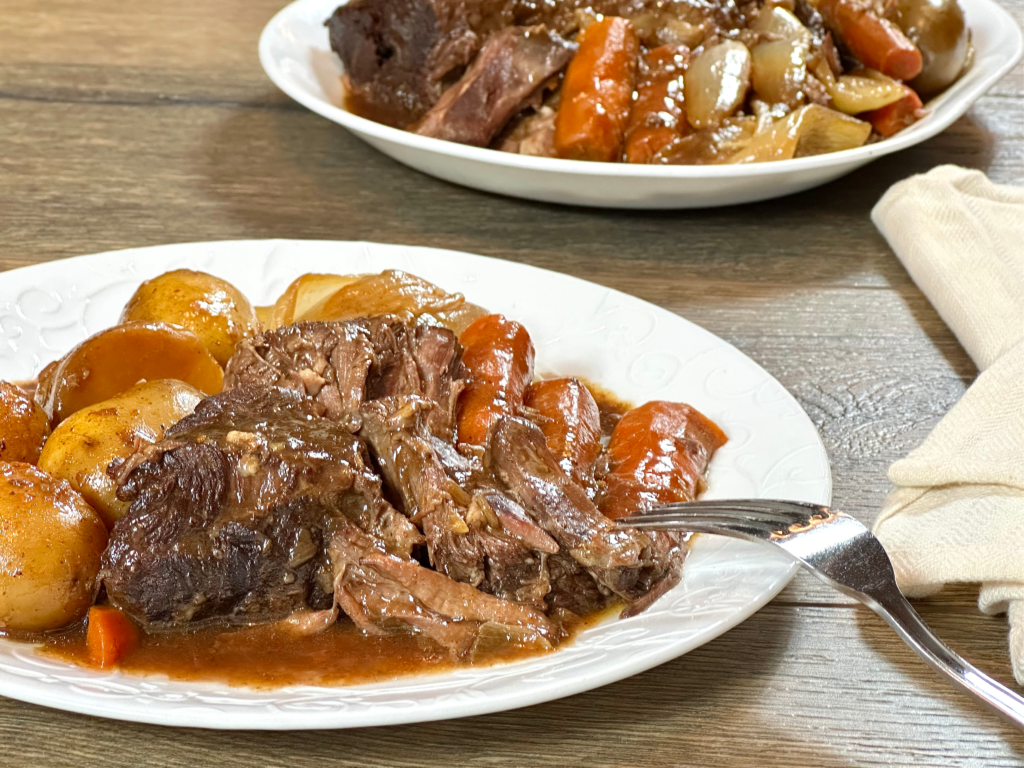
Pot roast is a homey and welcoming meal anyone can make. All you need to do is stick to a few basic rules to have a delicious mouthwatering pot roast. Using a slow cooker means you can set it and forget it and let dinner almost cook itself throughout the day. It’s practically a fail-safe method.
This is a complete meal that truly needs nothing else. But you might want biscuits or rolls to sop all the brown gravy goodness. Of course, you can’t go wrong with mashed potato—I like to omit the potato in the pot roast and serve the dish with a mashed potato side. Yum!!
Basics of pot roast:
Choose the right cut of meat: Chuck roast is the best option because it’s affordable and has great marbling with lots of fat, collagen, and connective tissues. The low and slow cooking renders the fat and breaks down the connective tissues to yield moist, fall-apart meat. Brisket and rump roast are also suitable cuts to use but are not as fatty. Keep in mind that the leaner the meat is, the more it is prone to drying out.
Cook low and slow: Time and low heat are key to cooking tough cuts of meat. Low heat and long cooking duration are needed to produce fork-tender results. In a pinch, you can cook on a high, but a low setting is highly recommended. This recipe is for a ballpark 4-pound roast. Cook on a low setting for 8 to 10 hours and high for 4-6 hours.
Do not open the lid: Opening the lid is a no-no in slow cooking. It reduces the temperature in the pot and slows down the cooking time.
Searing the roast is highly recommended: This is done before placing the roast into the slow cooker. Searing renders the fat and seals in the juices. The caramelization adds a tremendous amount of flavor. If you don’t have time, you can skip the searing. The chuck will still be tender and delicious. But it will have slightly less depth of flavor.
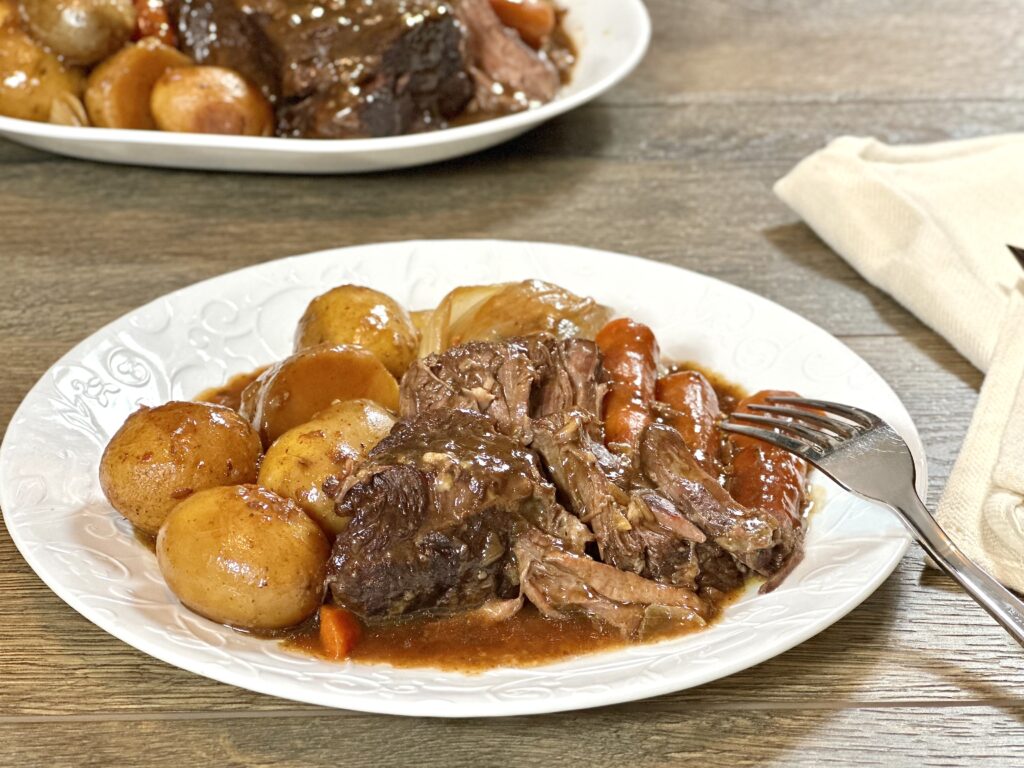
Ingredients needed:
- Chuck roast—is excellent for pot roast. Rump roast and brisket are also good choices.
- Vegetables—baby or waxy potatoes, carrots, and onions.
- McCormick Au Jus Gravy—for the gravy flavor base.
- Lipton Onion Recipe Soup & Dip Mix—for the gravy flavor base.
- Bay leaf—infuses aromatic undertone.
- Salt and black pepper—for seasoning the roast and to enhance flavor.
- Garlic—provides flavoring and adding depth of flavor
- Cornstarch—to thicken the gravy.
- Water—for the gravy base and moisture.
Recipe highlights:
- Combine 2 au jus mixes, 1 1/2 packets of onion soup mix, and chopped garlic with 1 3/4 cups of water to make the gravy base. Whisk. Set aside. Save the remaining half of the onion packet for another use.
- Season roast with salt and pepper. Sear on all sides in a preheated large skillet or saute pan on medium-high, about 2-3 minutes per side. Transfer to the slow cooker.
- Reduce skillet heat to medium. Add 1/2 cup water to deglaze the skillet, scraping the bottom to loosen the brown bits. Pour into the slow cooker.
- Place vegetables around the roast. Pour in the gravy base.
- Cook on low for 8 to 10 hours or high for 4-6 hours. The meat will fall apart tender when done.
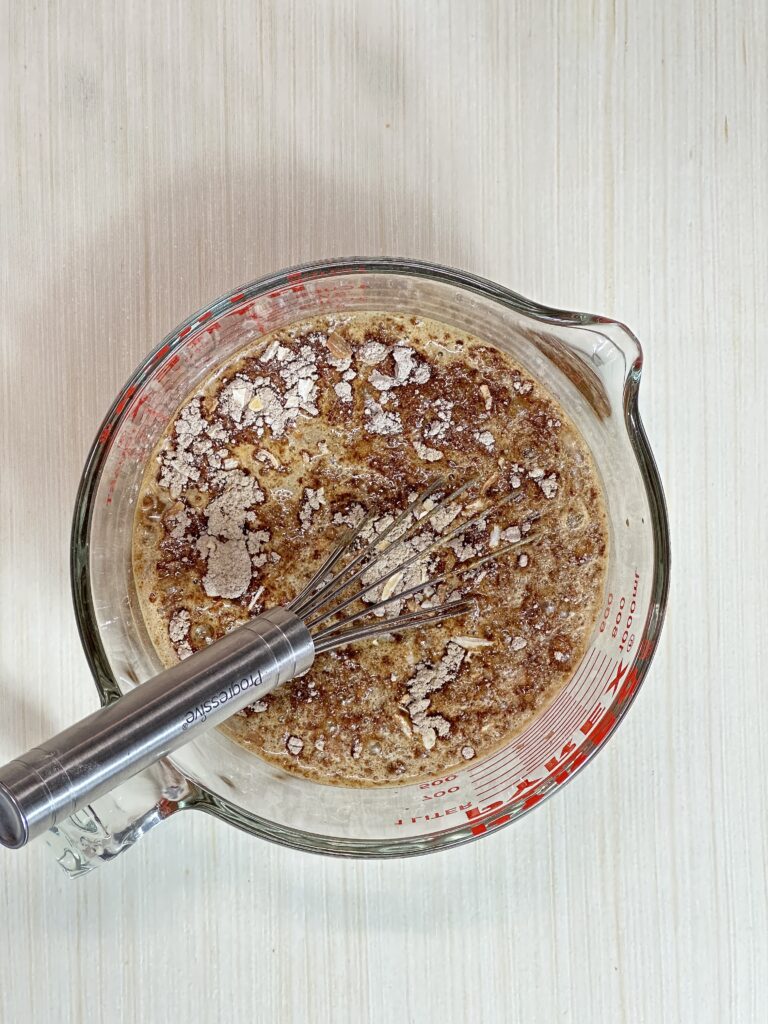


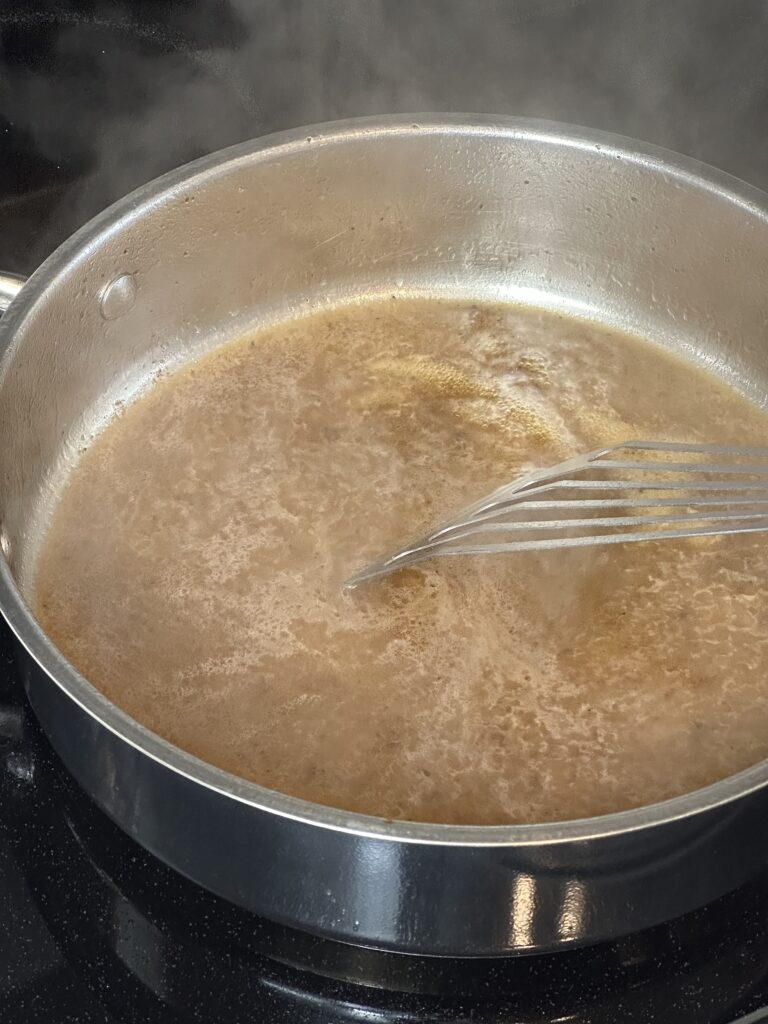
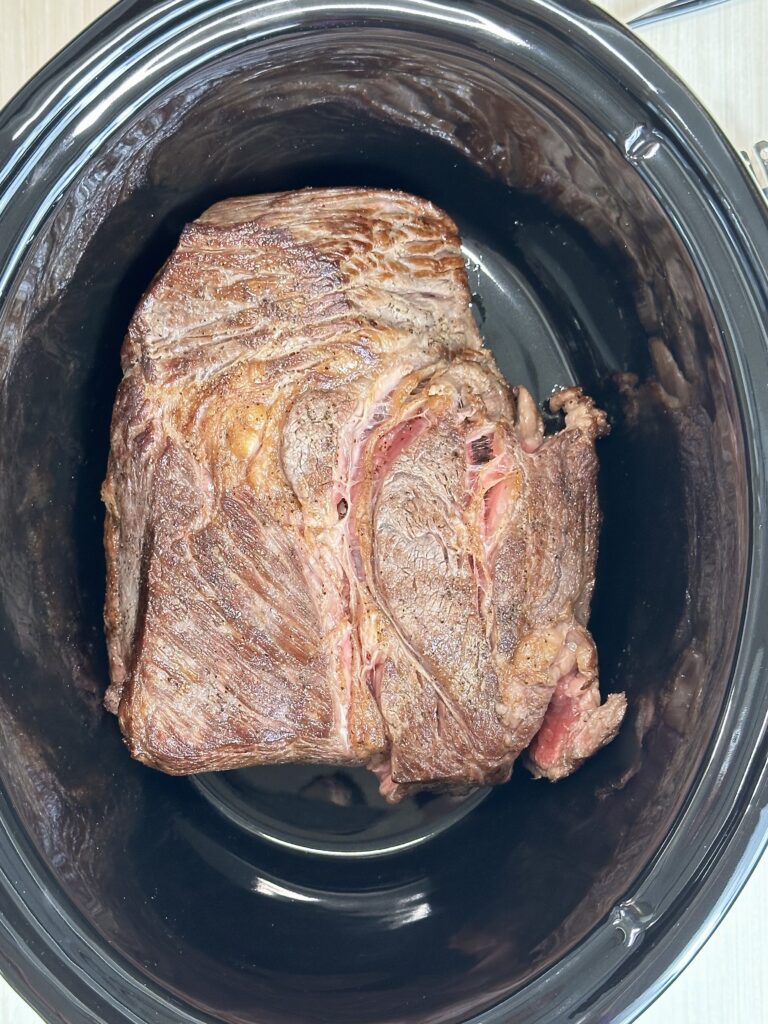
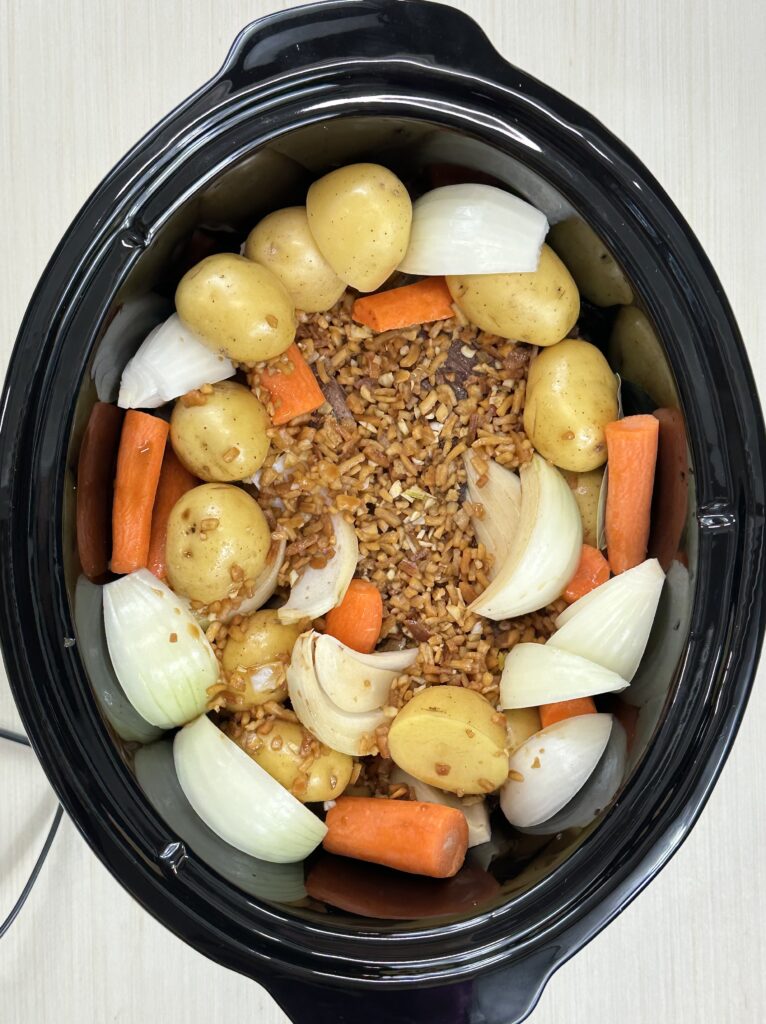
- Skim the fat off the top with a large spoon.
- Thicken gravy (optional): Transfer roast and veggies onto a platter. Pour the gravy into a saucepan on the stovetop. Bring to a boil. Combine cornstarch and water for the slurry. Add to the pan, stirring until boiling and thickened.
- Serve pot roast with gravy.
- Detailed instructions are in the recipe card below.
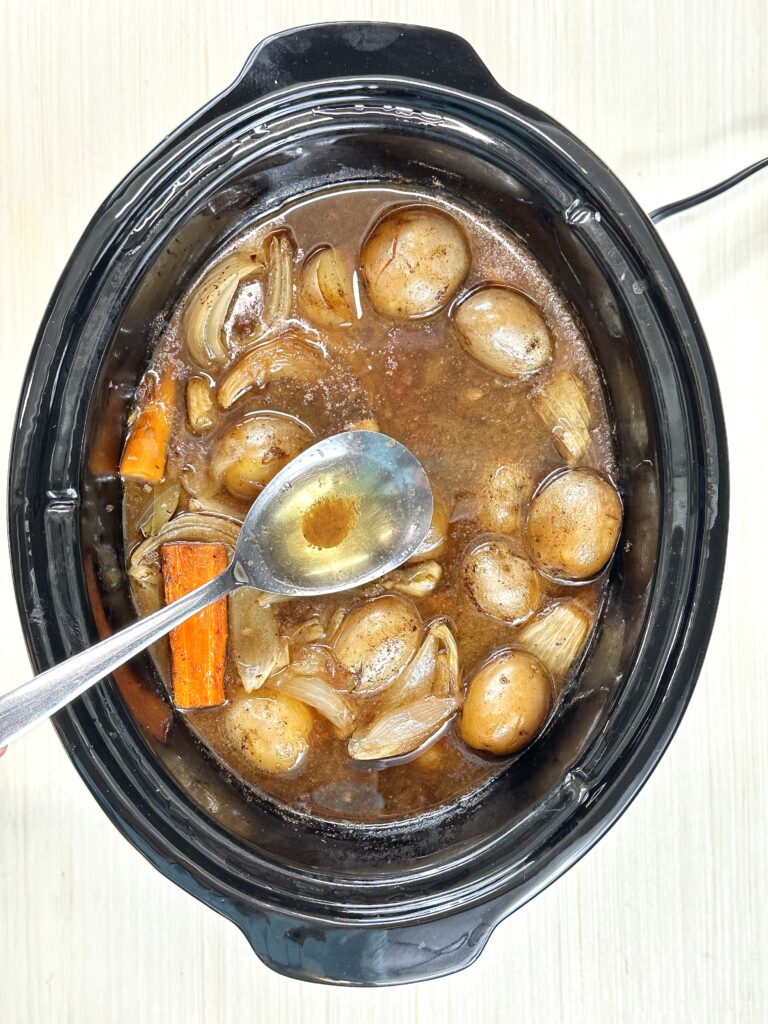

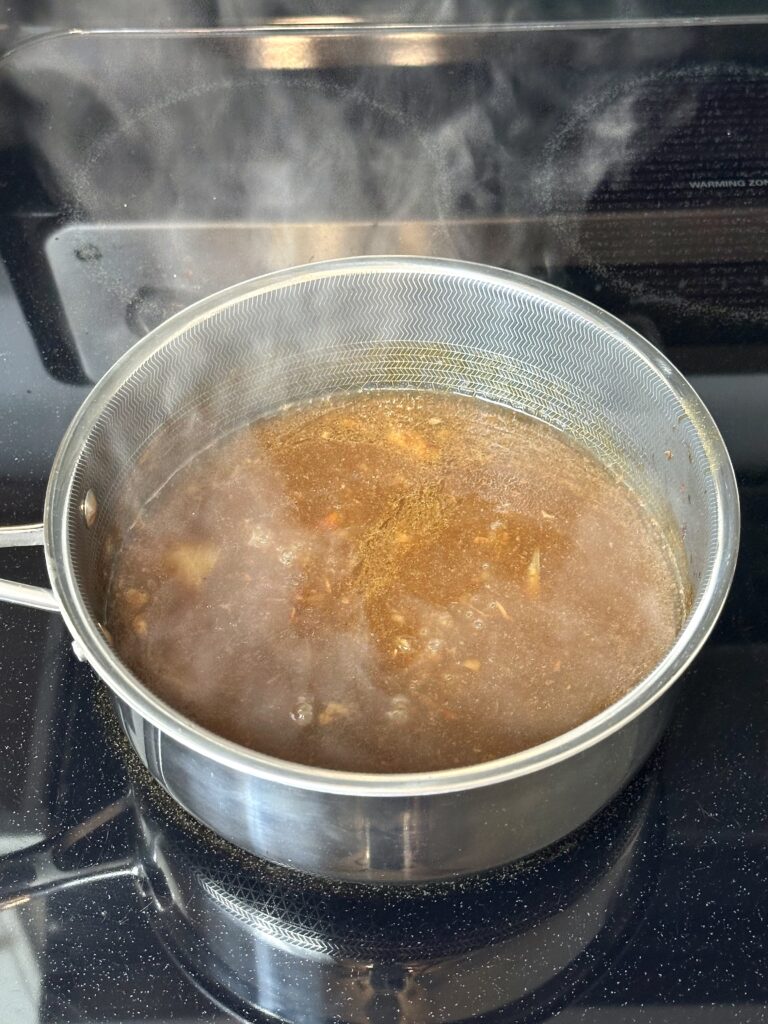
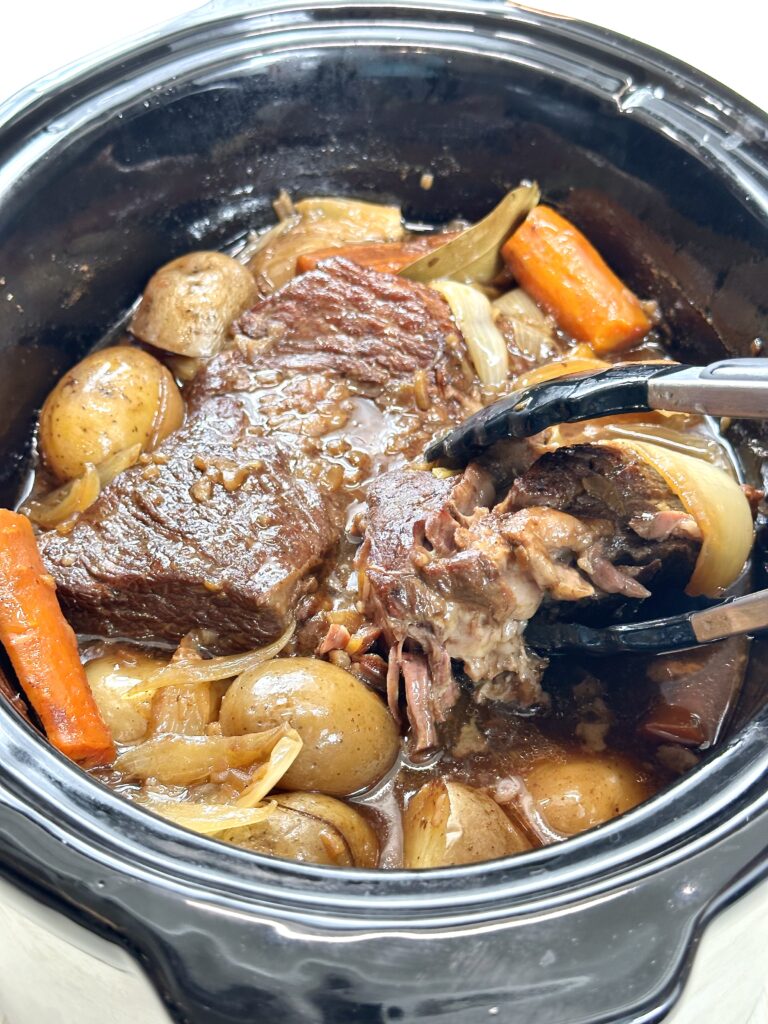
View the how-to video or save it for later with this Pinterest Pin.
Is searing the roast necessary?
As mentioned earlier, it’s not necessary but recommended. If you don’t have time, skip it. Just season the roast with salt and pepper and place it into the slow cooker. Skipping the searing means you won’t have the deglazed pan dripping to amp up the flavor of the gravy. But I guarantee there is plenty of flavor already.
How to tell when the roast is done?
The meat is done when it’s tender and shreds easily with a fork or when the internal temperature reaches 195° – 205° F. If you don’t have an instant-read thermometer, use visual and physical cues. Tough meat is an indication that it is not fully cooked. Continue cooking and check for doneness (do so quickly).
With that said, there is a slight chance the meat is tough because it’s overcooked. To eliminate this issue, check for doneness at the lowest end of the cooking timeframe and/or use a thermometer.
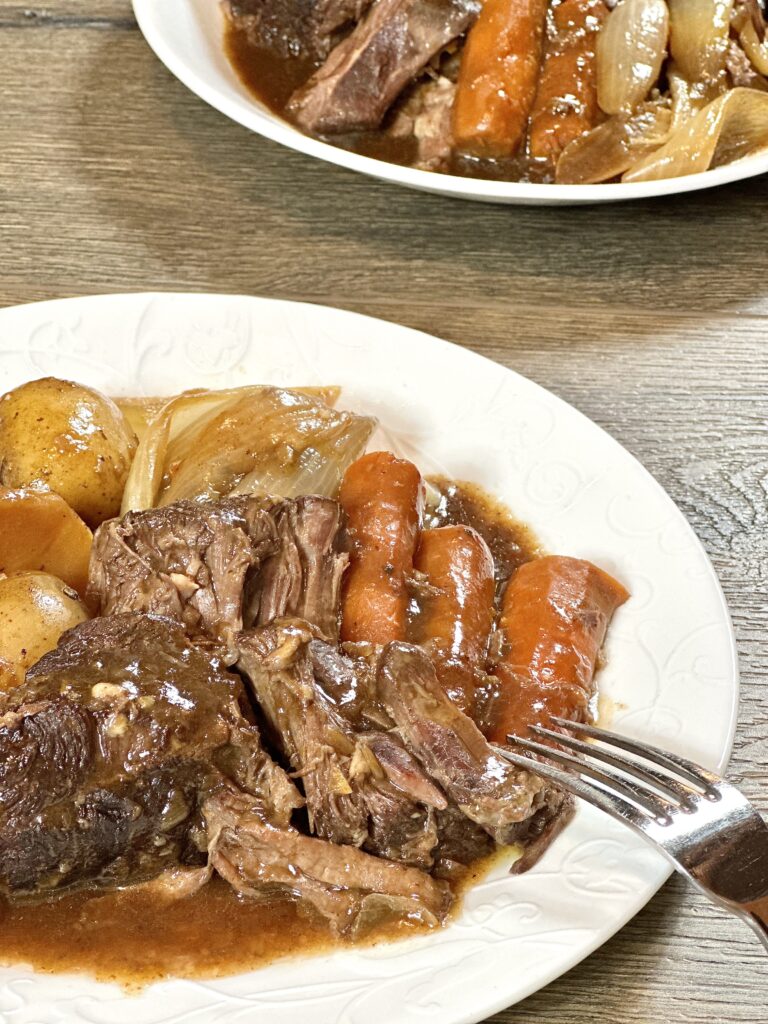
How to quickly start the pot roast in the morning:
Workday mornings are crazy enough without having to start dinner. But sometimes, a little extra effort in the morning has a big payoff at the end of the day. That’s where planning ahead makes it all possible. Here are some time-saving tips:
- Wash, scrub, and cut the vegetables ahead the night before. Don’t peel the carrots and potatoes. Use baby potatoes to eliminate the need to peel or cut into chunks.
- Skip the searing of the roast entirely. The pot roast will turn out flavorful and fantastic. Searing just gives it more color and depth of flavor and helps to better seal in the juices.
- The USDA cautions against partially cooking meat and finishing it later, but many slow cooking enthusiasts recommend searing the meat the night before as a time saver. I haven’t done that myself, preferring to skip the searing altogether. It’s your roast and your call.
- Prep and get everything in the slow cooker pot the night before refrigerating. In the morning, simply place the pot in the slow cooker base and turn it on. The one caution I have about this method is the chilled pot and content will extend the cooking time. If you don’t mind prolonging the cooking time, then is a great morning time-saving option. The alternative is to chill the components in containers and throw everything into the slow cooker in the morning.
Add-ons and substitutions:
Rosemary and thyme are widely used in pot roast. Fresh or dried is fine. This recipe is perfect without them, but feel free to toss some in.
If you’re searing the roast, you can substitute red wine for water to deglaze the pan. This substitution helps build the layers of flavor.
Adding a couple of stalks of chunked-up celery would further add to the depth of flavor. To further change things up, try swapping out one or two of the veggies: rutabaga, parsnips, and sweet potatoes are good substitutions.
I personally like to omit the potatoes and replace them with mashed potatoes on the side. I can’t resist mashed potatoes and gravy!!

How to store:
Leftover pot roast can be stored in an airtight container for 3-4 days. It can be frozen, stored in freezer bags or airtight container for up to 3 months. Defrost overnight in the refrigerator before reheating.
You Might Also Like:
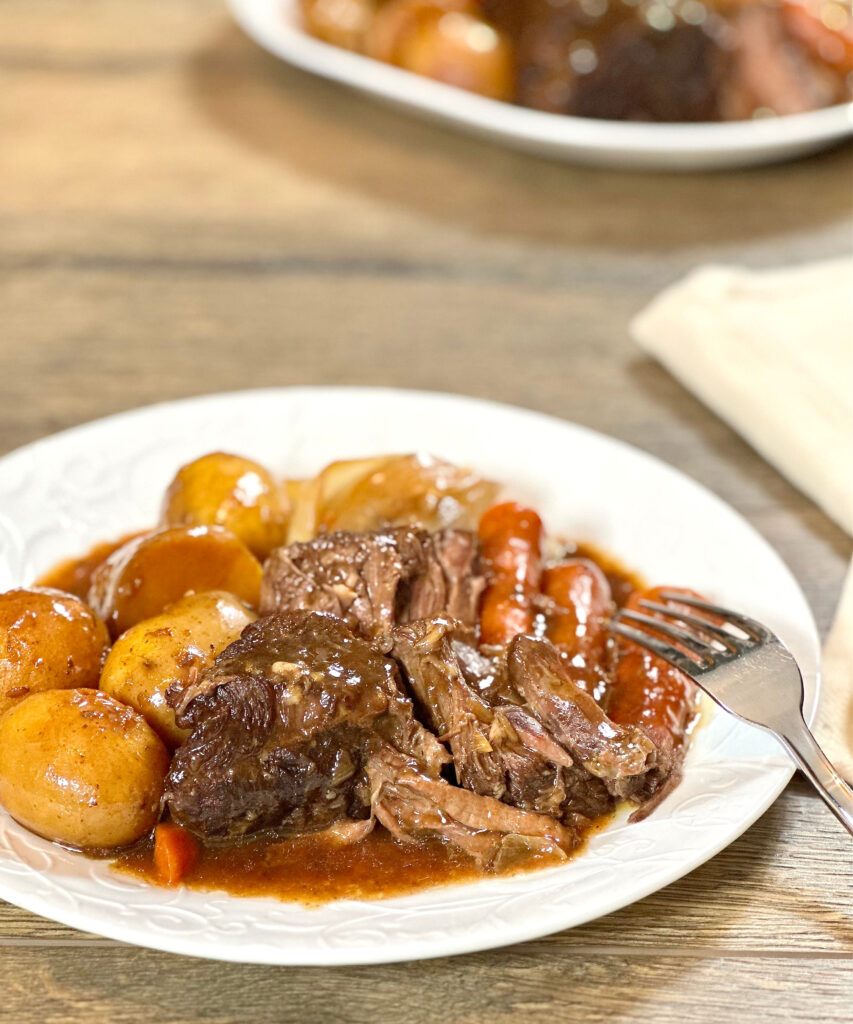
Slow Cooker Pot Roast
Description
This Slow Cooker Pot Roast transforms tough but economical chuck roast into a fork-tender and juicy meal. It’s slow-cooked with carrots, onions, and potatoes. Seasoning packets are used to create an easy, most flavorful brown gravy.
Ingredients
Special equipment:
Instructions
- Prepare gravy base: Add both au jus packets, 1 1/2 packets of the onion mix, and chopped garlic to 1 3/4 cups of water. Whisk. Set aside. Reserve the remaining half of the onion packet for another use.
- Sear roast: Preheat a large skillet or saute pan on medium-high. Meanwhile, pat roast dry with paper towels. Season with salt and pepper. Add enough oil to coat the bottom of the skillet and allow it to get hot. Add roast and sear on all sides to develop a golden brown crust, about 2-3 minutes per side. Transfer to the slow cooker.
- Deglaze skillet: Reduce skillet heat to medium. Add the remaining 1/2 cup water to deglaze the skillet, scraping the bottom to loosen the brown bits. Pour content into the slow cooker. (See Note ** below if skipping the searing of the roast.)
- Fill slow cooker: Place vegetables around the roast. Pour in the seasoned liquid.
- Slow cook: Cook on low for 8 to 10 hours and high for 4 to 6 hours or until the meat is fork-tender. Check for doneness at the 8-hour mark for low and the 4-hour mark for high. Done when the meat shreds easily using a fork. If your slow cooker tends to cook on the fast side, do your first doneness check earlier than suggested.
- Skim off fat: Use a large spoon to skim (and discard) the fat off the top of the top.
- Remove the roast and veggies (keep covered). Crank the slow cooker on to high (covered) and bring to a boil. Or, for a faster method, transfer the liquid into a pan on the stovetop and bring it to a boil.
- Combine and whisk cornstarch and water to make a slurry. Stir into the gravy, stirring until it begins to thicken. Serve poured over roast and vegetables.
- Makes 6 servings.
Thicken gravy (optional):
Notes:
- * Leave small baby potatoes whole. Cut larger potatoes. They are best kept under 2 inches thick all around.
- ** Searing the roast seals in the juices and adds flavor. This step is optional but recommended. If skipping this step, pat roast dry and season with salt and pepper. Skip the searing and deglazing. Place the roast in the slow cooker and continue as instructed.
- Cook on low setting if at all possible. Low and slow cooking is the secret to tender, fall-apart meat. Cooking on high may not produce the same tender results.
Disclosure: This site contains paid advertising and affiliate links. In Good Flavor is a participant in the Amazon Services LLC Associates Program, an affiliate advertising program designed to provide a means for sites to earn advertising fees by advertising and linking to Amazon.com.

 Easy Pork Roast with Vegetables
Easy Pork Roast with Vegetables Chuck Steak Roast
Chuck Steak Roast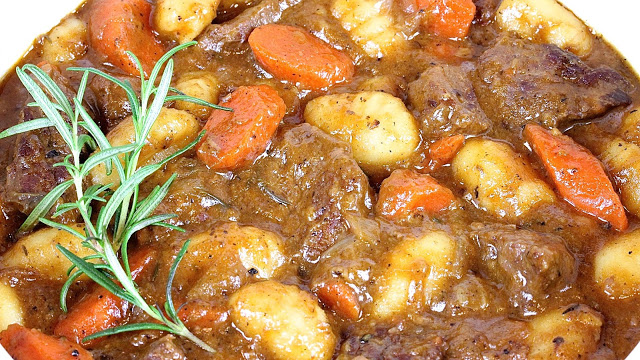 Beef and Gnocchi Stew
Beef and Gnocchi Stew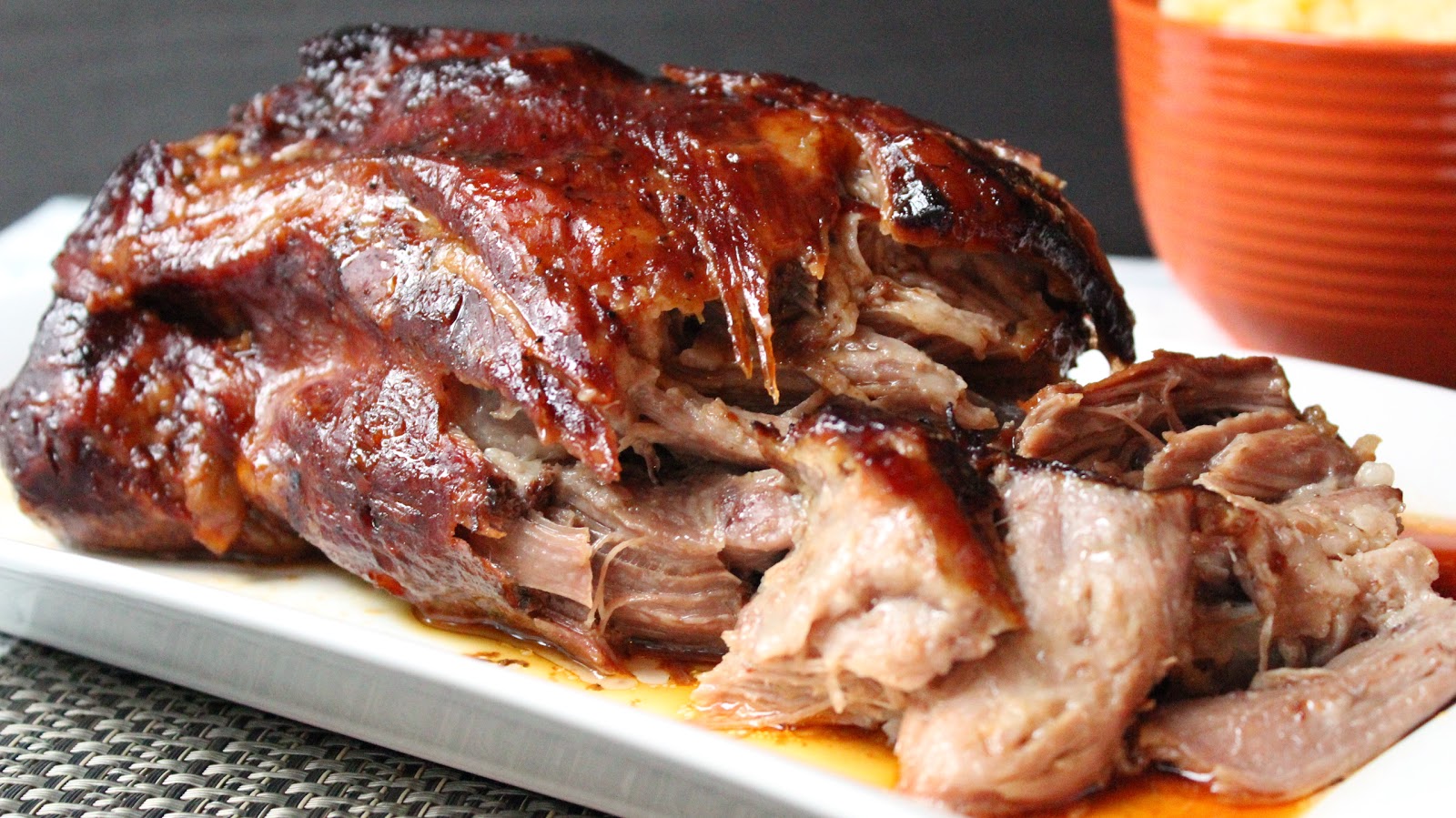 Slow Roasted BBQ Pork
Slow Roasted BBQ Pork


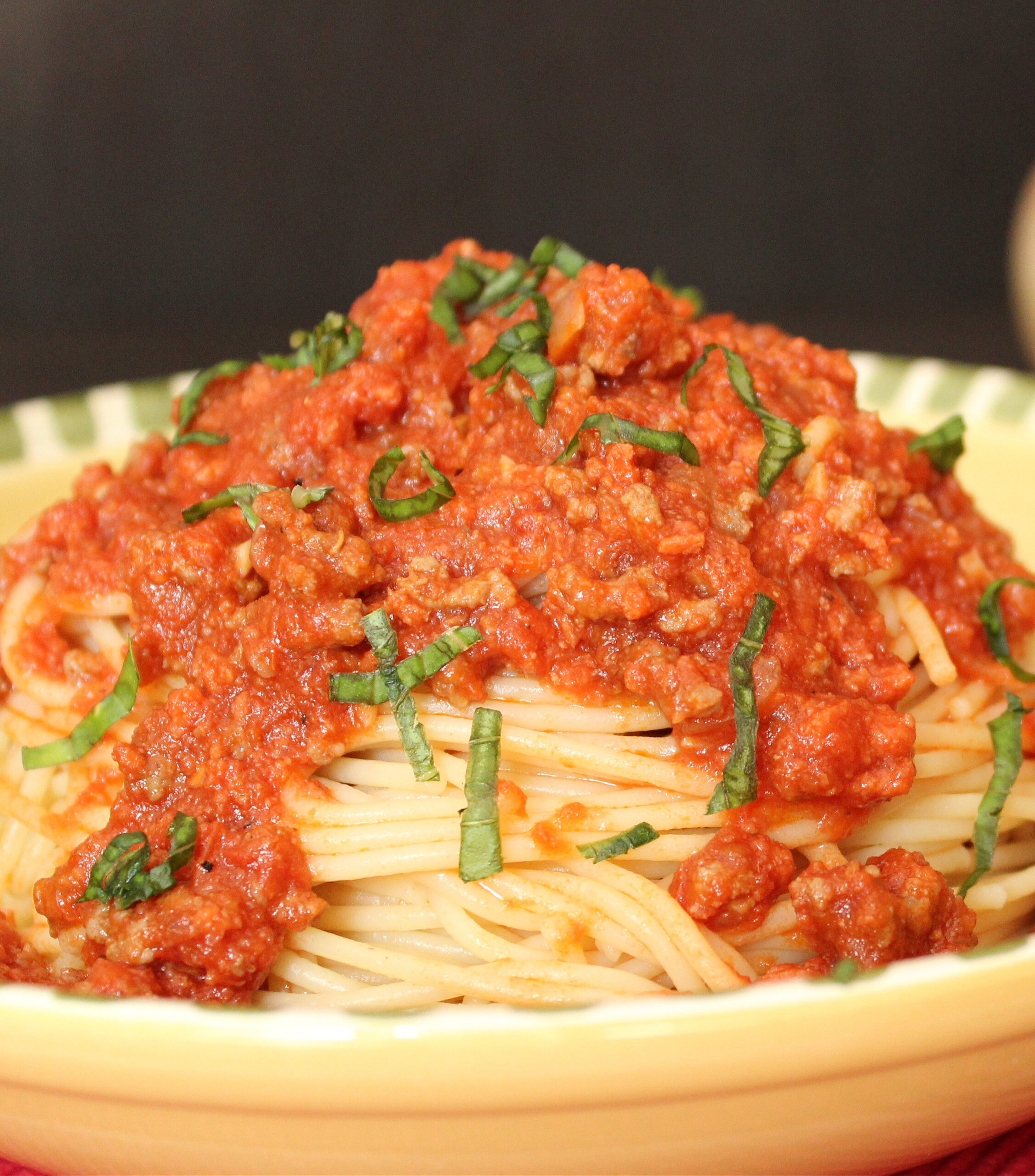
There’s nothing like putting a chuck roast into a slow cooker on weekend morning, letting the smell fill up the house, and enjoying a great dinner with little effort.
Thanks for the inspiration.
Happy Holidays to you.
Velva
I think it makes the house feel extra homey and aroma is hard to beat. Happy Holidays to you too, Velva!!
One of my favorite meals. This was a Sunday dinner when I was growing up. I hope you and your family have a wonderful Christmas.
It’s a meal that says home. Wishing you a Merry Christmas and a Happy New Year, Karen!